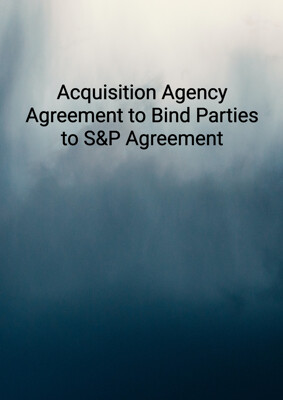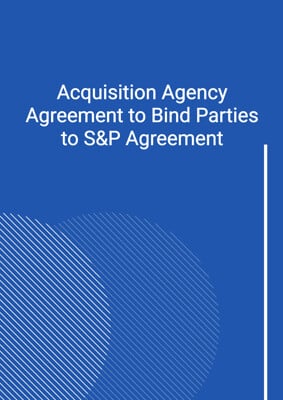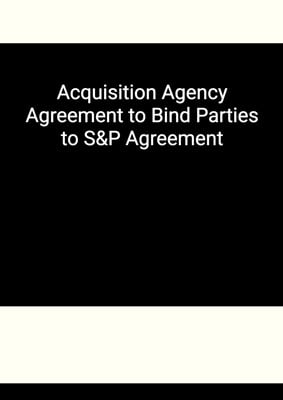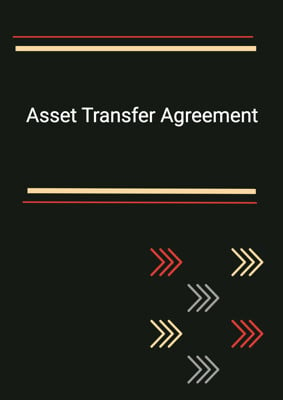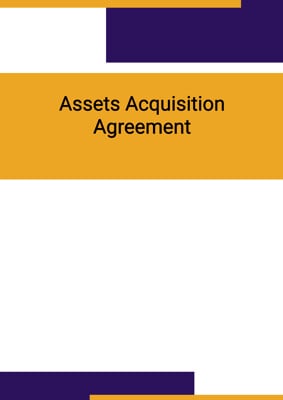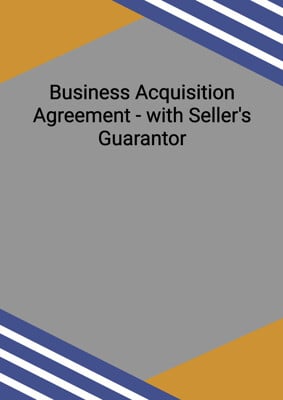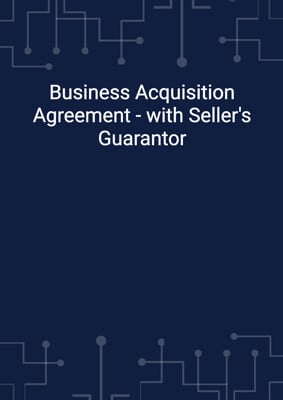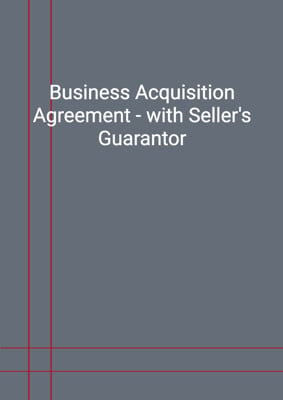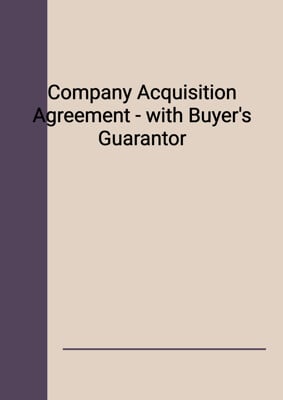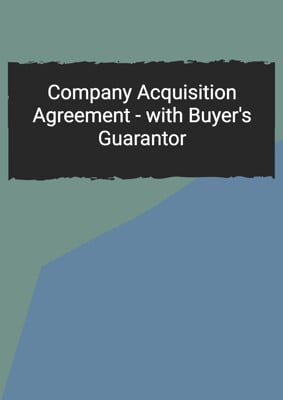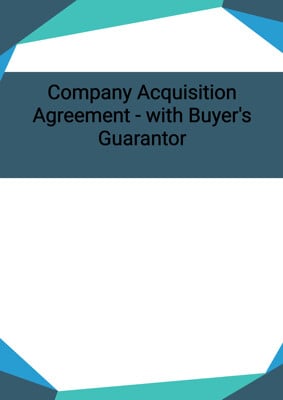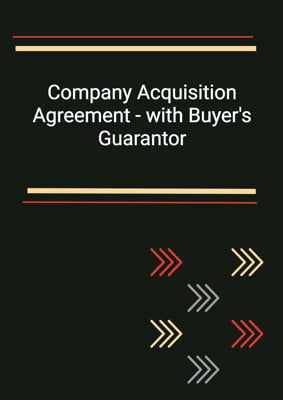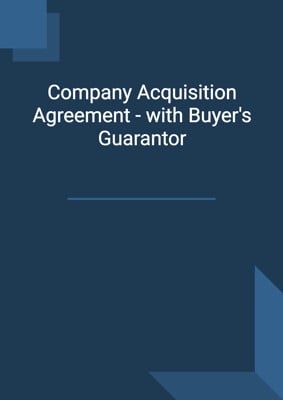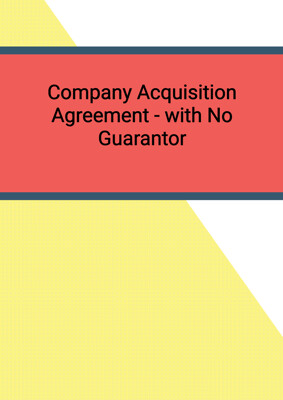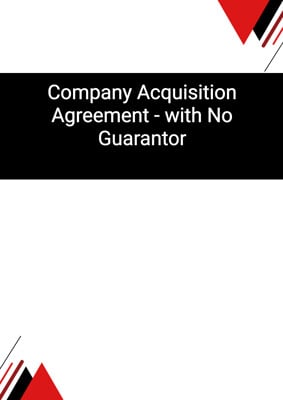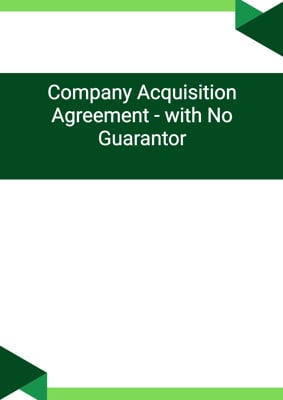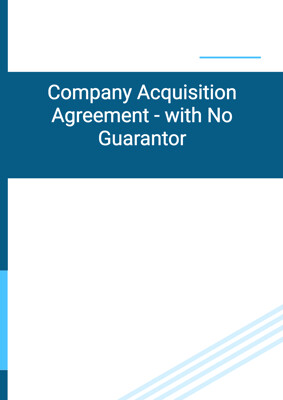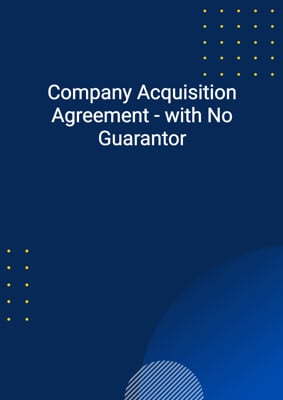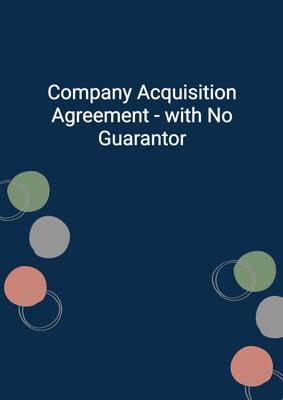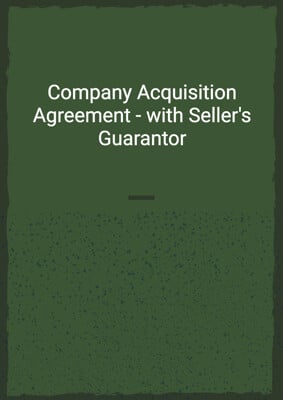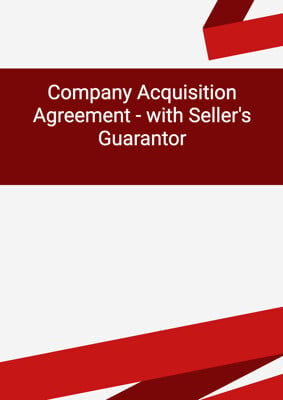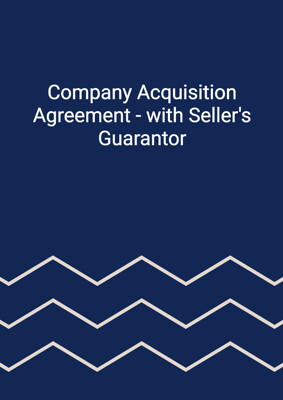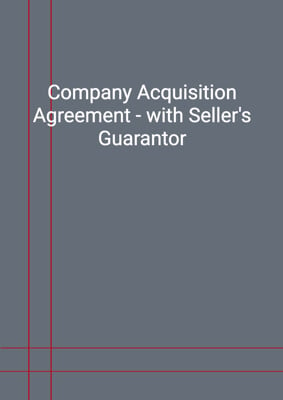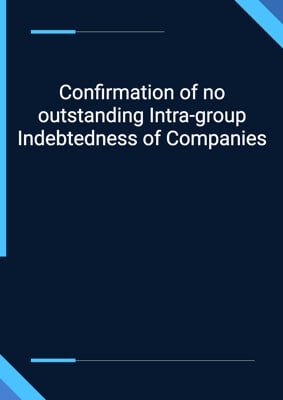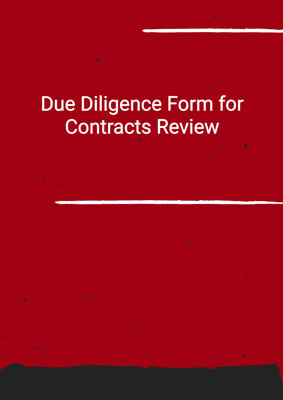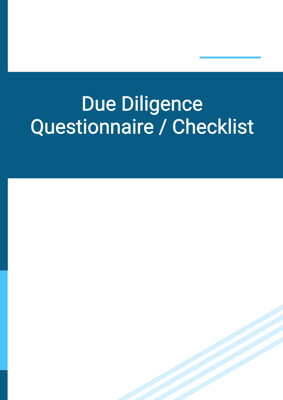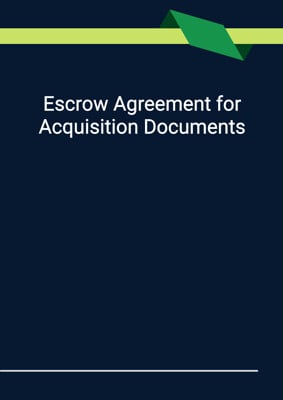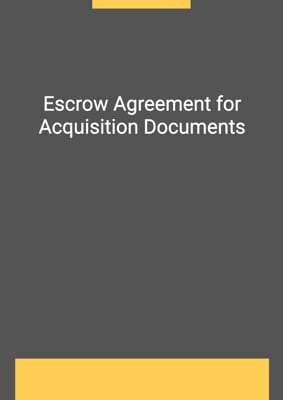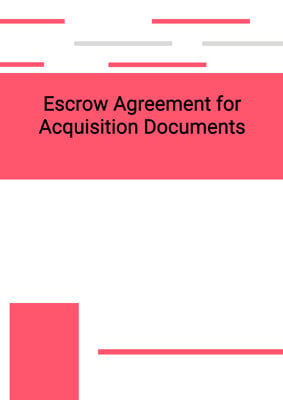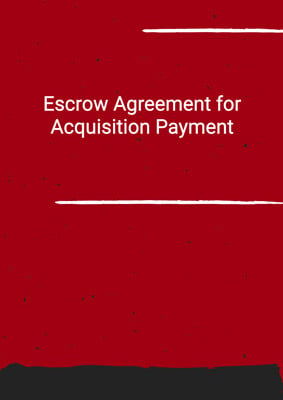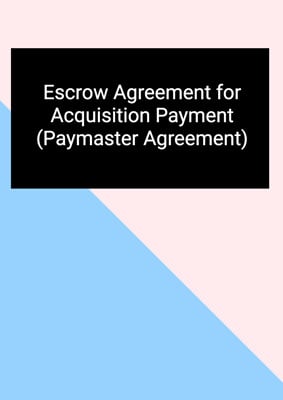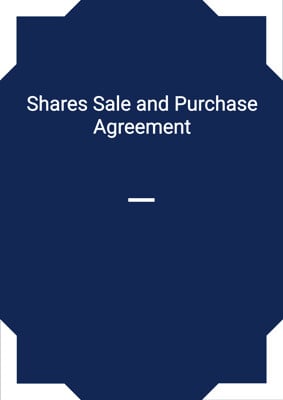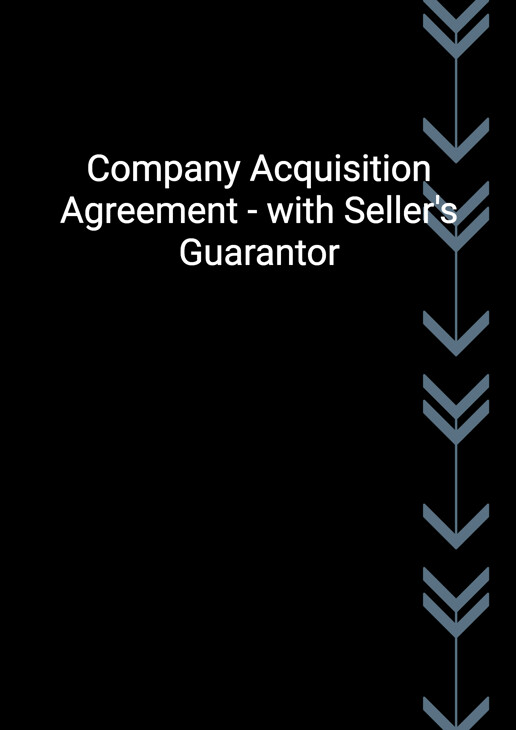
Company Acquisition Agreement - with Seller's Guarantor
Seller Form - 1 Seller
A company acquisition agreement between a Buyer and a Seller with the Seller's parent guaranteeing the obligations. The Seller's warranties are included in another template. This agreement is drafted in favour of the Seller.
How to Tailor the Document for Your Need?
01
Create Document
Fill in the details of the parties. You can click the "Fill with Member’s Information" button to complete it with information saved to your account.
02
Fill Information
Please fill in any additional information by following the step-by-step guide on the left hand side of the preview document and click the "Next" button.
03
Get Document
When you are done, click the "Get Document" button and you can download the document in Word or PDF format.
04
Review Document
Please get all parties to review the document carefully and make any final modifications to ensure that the details are correct before signing the document.
Document Preview
Document Description
The Company Acquisition Agreement - with Seller's Guarantor is a legal document that outlines the terms and conditions of the acquisition of a company. The agreement is entered into between the seller, the guarantor, and the buyer. The document highlights the importance of the agreement in facilitating the transfer of ownership of the company from the seller to the buyer.
The entire document is divided into several sections, each addressing specific aspects of the acquisition process. The first section, titled 'Interpretation', provides definitions for key terms used throughout the agreement. This ensures clarity and understanding of the terms used.
The second section, titled 'Sale of the Shares and Price', outlines the agreement between the seller and the buyer regarding the sale and purchase of the shares of the company. It specifies the number of shares to be sold, the price to be paid, and the terms of payment.
The third section, titled 'Conditions to Completion', sets out the conditions that must be fulfilled before the sale and purchase of the shares can be completed. These conditions include obtaining shareholder approval, obtaining consents from relevant parties, and the repayment of any outstanding intra-group indebtedness.
The fourth section, titled 'Pre-Completion Undertakings', outlines the obligations of the seller prior to completion. These obligations include allowing the buyer's representatives access to the company's books and records, conducting business in the usual course, and preserving and protecting the business assets.
The fifth section, titled 'Completion', specifies the procedures and requirements for completing the sale and purchase of the shares. It includes the delivery of share transfers, share certificates, and other relevant documents.
The sixth section, titled 'Completion Accounts', outlines the process for preparing and finalizing the completion accounts. These accounts reflect the financial position of the company at completion and are used to determine the final purchase price.
The seventh section, titled 'Post-Completion Undertakings', sets out the obligations of the buyer after completion. These obligations include the repayment of connected trading indebtedness and the release of the seller and their connected persons from any connected guarantees.
The eighth section, titled 'Buyer Warranties', contains representations and warranties made by the buyer to the seller. These warranties provide assurances regarding the buyer's ability to perform its obligations under the agreement.
The ninth section, titled 'Seller Warranties', contains representations and warranties made by the seller to the buyer. These warranties provide assurances regarding the seller's ownership of the shares and the financial position of the company.
The tenth section, titled 'Limitations on Claims', sets out the limitations on the buyer's claims against the seller for breach of warranties. It specifies the time limits for making claims and the maximum liability of the seller.
The eleventh section, titled 'Seller's Rights to Terminate', grants the seller the right to terminate the agreement in certain circumstances, such as a breach by the buyer or a material adverse event affecting the business.
The twelfth section, titled 'Withholding Tax and Grossing Up', addresses the payment of sums under the agreement and the obligation to gross up payments to account for any required deductions or withholdings.
The thirteenth section, titled 'Entire Agreement', confirms that the agreement and the disclosure letter constitute the entire agreement between the parties and supersede any prior agreements or understandings.
The fourteenth section, titled 'Variation', states that any variations to the agreement must be in writing and signed by all parties.
The fifteenth section, titled 'Assignment', allows for the assignment of rights and obligations under the agreement, subject to certain conditions.
The sixteenth section, titled 'Announcements', restricts the parties from making any announcements or disclosures regarding the agreement without the prior written approval of the other party.
The seventeenth section, titled 'Costs', states that each party is responsible for its own costs incurred in connection with the agreement, except for certain specified costs.
The eighteenth section, titled 'Severability', provides that if any provision of the agreement is held to be invalid or unenforceable, it shall be deemed not to be included in the agreement, but the remaining provisions shall remain in full force and effect.
The nineteenth section, titled 'Counterparts', allows for the execution of the agreement in multiple counterparts, each of which is considered an original.
The twentieth section, titled 'Further Assurance', requires the parties to perform any further acts or execute any further documents necessary to implement the agreement.
The twenty-first section, titled 'Guarantee', outlines the guarantor's unconditional and irrevocable guarantee of the seller's obligations under the agreement.
The twenty-second section, titled 'Waivers/Buyer's Rights and Remedies', states that the buyer's rights and remedies under the agreement are cumulative and may be exercised as often as necessary.
The twenty-third section, titled 'No Rights of Third Parties', clarifies that only the parties to the agreement have the right to enforce its terms.
The twenty-fourth section, titled 'Governing Law, Jurisdiction', specifies that the agreement is governed by the laws of the relevant jurisdiction and any disputes arising from the agreement shall be subject to the jurisdiction of the relevant courts.
The twenty-fifth section, titled 'Notices and Service', sets out the requirements for giving notice under the agreement, including the methods of service and the addresses for each party.
The twenty-sixth section, titled 'Time of the Essence', emphasizes that time is of the essence in relation to the times, dates, and periods mentioned in the agreement.
The agreement concludes with the signatures of the duly authorized representatives of the parties.
How to use this document?
To use the Company Acquisition Agreement - with Seller's Guarantor, follow these steps:
1. Review the agreement: Familiarize yourself with the terms and conditions outlined in the agreement. Pay attention to the specific details regarding the sale and purchase of the shares, conditions to completion, completion accounts, and post-completion undertakings.
2. Seek legal advice: If you have any questions or concerns about the agreement, consult with a legal professional who specializes in business acquisitions. They can provide guidance and ensure that the agreement meets your specific needs.
3. Negotiate terms: If necessary, negotiate the terms of the agreement with the other parties involved. This may include discussing the sale price, completion conditions, warranties, and any other relevant provisions.
4. Obtain necessary approvals: Ensure that all necessary approvals, such as shareholder approval and consents from relevant parties, are obtained before proceeding with the acquisition.
5. Prepare completion accounts: If applicable, prepare the completion accounts in accordance with the agreed-upon accounting policies and procedures. These accounts will be used to determine the final purchase price.
6. Complete the sale and purchase: Once all conditions have been fulfilled, complete the sale and purchase of the shares. This may involve the transfer of share certificates, execution of necessary documents, and payment of the agreed price.
7. Fulfill post-completion undertakings: After completion, fulfill any post-completion undertakings, such as the repayment of connected trading indebtedness and the release of guarantees.
8. Monitor warranties and claims: Monitor the seller's warranties and be aware of any potential claims that may arise. Adhere to the time limits and limitations on claims specified in the agreement.
9. Comply with tax obligations: Ensure that all tax obligations, including withholding tax and grossing up requirements, are met in accordance with the agreement.
10. Keep records: Maintain accurate records of all transactions and communications related to the acquisition. These records may be necessary for future reference or in the event of any disputes.
It is important to note that this guidance is for informational purposes only and should not be considered legal advice. It is recommended to consult with a legal professional to ensure compliance with applicable laws and regulations.
Not the right document?
Don’t worry, we have thousands of documents for you to choose from:
